Last Updated on April 4, 2024
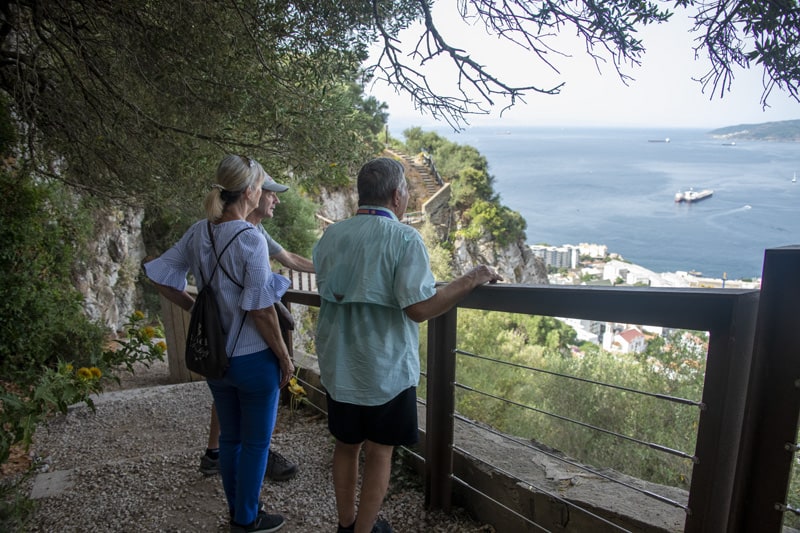
By Jim Ferri
Hearing about Gibraltar since childhood, I had always wanted to see it. But even to the day I arrived there, I never realized how many things there were to do in Gibraltar.
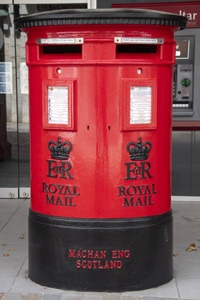
I knew a bit about the the “Rock of Gibraltar” (no, it’s not an island.”)…where it is (on the Iberian Peninsula, but it’s British, not Spanish)…why it’s famous (its pivotal role in history as the “key to the Mediterranean”).
And now, at the end of a conference in Marbella in Southern Spain, “the Rock” was so tantalizingly close, only an hour’s drive away.
I knew I had to go. So, “hello, Hertz.”
And two other things – it’s a British Overseas Territory and one of the most unusual places you’ll ever visit.
A good part of Gibraltar’s charm is that it’s old England in a time warp. With one of the weirdest airports in the world. The runway crosses the main road in and out, and police must stop traffic whenever a plane lands or takes off.
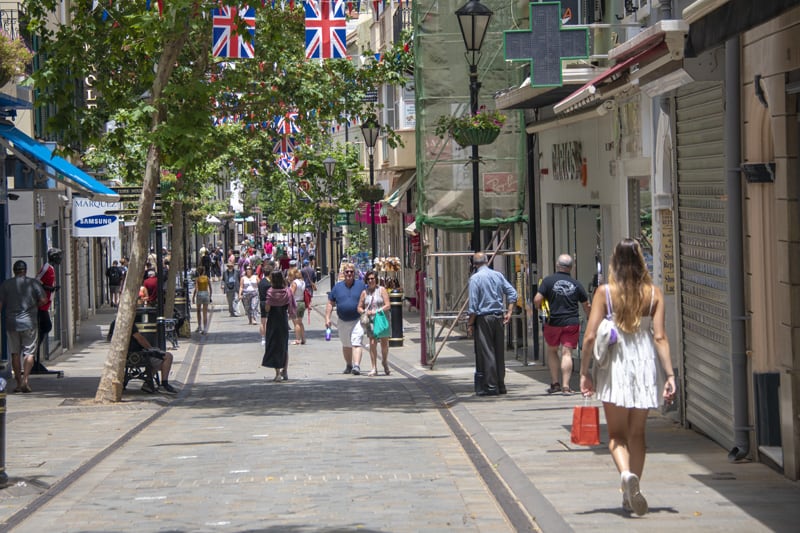
Getting There
Many British fly to Gibraltar since it’s just a four-hour flight from London. And pre-pandemic more than 200 cruise ships called there with more than 300,000 passengers.
It’s a popular stop on Western Mediterranean and Canary Island cruises. It’s also sometimes a port on repositioning cruises between Europe and Florida.
There are also popular day tours to Gibraltar from several southern Spainish cities. You can also take a public bus from Spain.
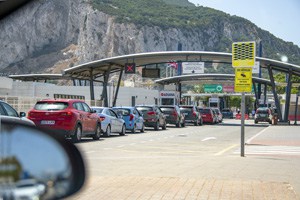
If you come via a Spanish bus, you leave the bus at la línea, the demarcation point with Spain. You then take your luggage and walk across the runway. At that point, you’re only a 12-minute walk from the center of town.
Gibraltar, thankfully, is very compact.
I arrived in my rental car after taking a leisurely ride along the Costa del Sol. It was an easy drive that allowed me to see Gibraltar rising out of the morning fog in the distance.
But once I arrived at la línea, I had to get into the line of cars at customs. The line snaked around several parking lots for 22 minutes before British customs waved me through.
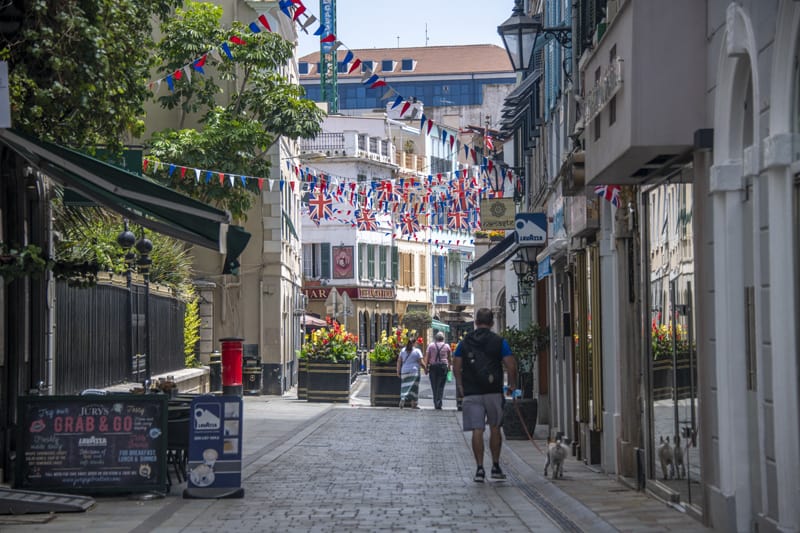
Rule #1: Don’t Drive in the City of Gibraltar
Gibraltar town is a warren of narrow streets and lanes meant for pedestrians, not autos. It’s also wonderfully walkable.
Knowing this in advance, I needed to find a hotel as close to la linea as possible that also offered free parking. The one that was a perfect fit was the Holiday Inn Express.
It was a surprisingly good hotel. I initially selected it because it was one of the first hotels you came upon when you entered the city of Gibraltar. It’s spotless, modern, and offers a big breakfast. Moreover, the staff is accommodating. Anything I ask for – they’re right on top of it immediately.
Everything is an easy walk or a short cab ride from the hotel. And the street it’s on leads one right to the other side of Gibraltar to places such as Europa Point.
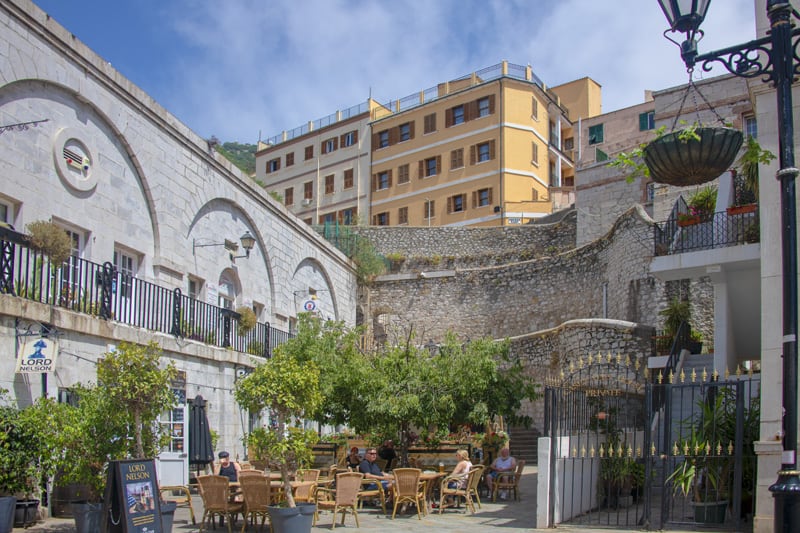
Old Town Gibraltar
On the island’s western side, Gibraltar’s Old Town is a slice of old England in the Mediterranean.
Walk about its warren of streets and alleys, and you’ll feel you stepped back in time. Gibraltar is also a party town that draws many Brits for hen and stag parties or those who want to kick back for a few days in its numerous pubs and restaurants.
Grand Casemates Square‘s perimeter, flush with numerous pubs and restaurants, is Old Town’s largest open space. It dates to 1817, although the Moors made use of it as far back as the 10th century. In addition, it was once the place for public executions.
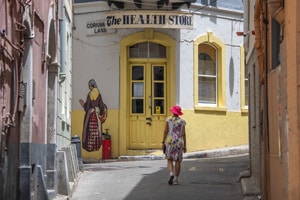
Casemates anchors the northern end of Main Street, the city’s main thoroughfare. You find many better-known shops on Main, including some high-street British stores. Walk down it, or stop for a few pints or a meal, and you’ll feel you’re in England a century ago.
I couldn’t help but notice some unusual street names such as Bedlam Court, Bomb House Lane, Drinkwater Road, City Mill Lane, etc.
Another oddity in this incredibly English place was Irish Town, which despite its name, is a street, not a neighborhood. It’s name refers to the Irish women who came to keep company with members of the British garrison.
It is one of the liveliest streets in Gibraltar, although all its buildings were destroyed in the Great Siege (1779-83). Rebuilt in the early 19th century, it’s now one of the city’s most fashionable areas.
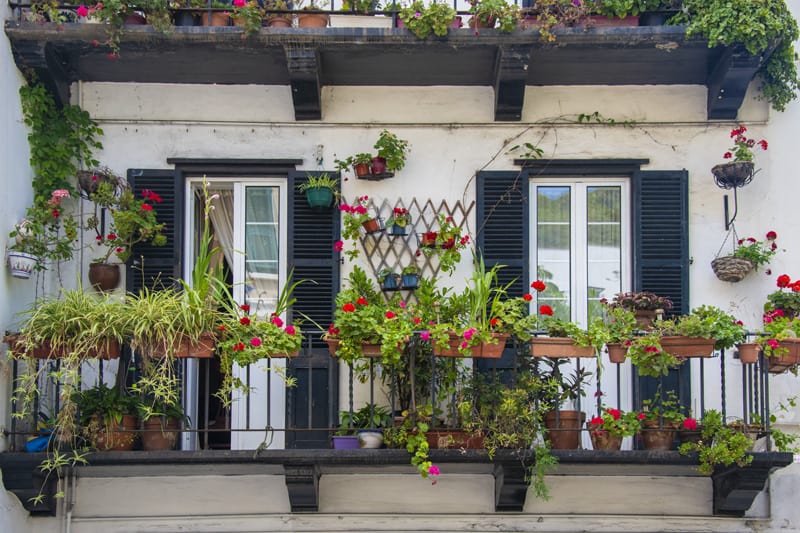
Two Cathedrals and a Haunted Convent
It’s unusual that a relatively small city such as Gibraltar would have two Cathedrals. The oldest, Cathedral St. Mary the Crowned, dates from 1462. It was consecrated by Spain’s monarchs, King Ferdinand III and Queen Isabella. A former mosque during the Moorish occupation, the original central courtyard is now the cathedral’s patio.
The other church, Holy Trinity Cathedral of the Church of England, was built in 1832 and looks more similar to a mosque than an Anglican cathedral. Ironically, it survived both world wars intact, only to be heavily damaged when a British naval armament carrier exploded in the nearby docks in 1951.
Built in 1531, and one of the oldest buildings in Gibraltar, is the Convent on Main Street. Originally the home of Franciscan friars, the government converted it to the home of the Governor of Gibraltar around 1730. It’s said to be one of the most haunted buildings in Europe.
Elsewhere in Gibraltar Town
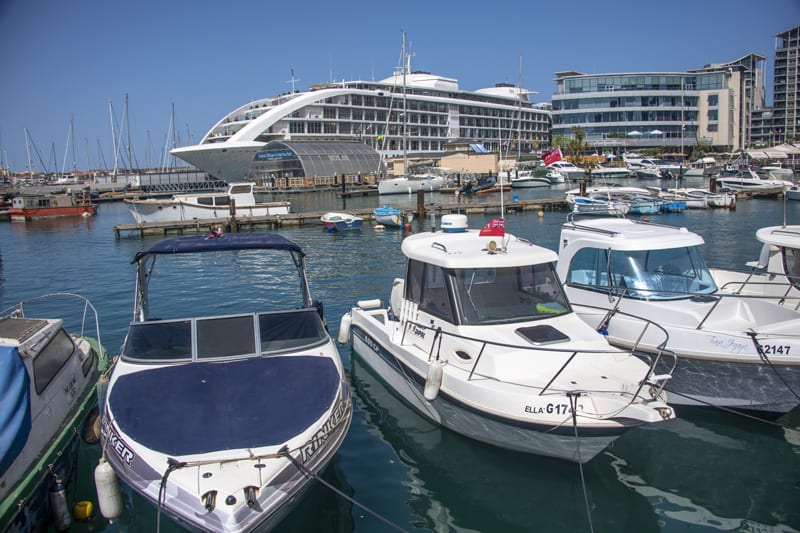
If you want to see the modern side of Gibraltar, head for trendy Ocean Village. If you’ve arrived by cruise ship, you’ve likely already seen a bit of it. It’s on the harbor, not far from the airport’s single runway.
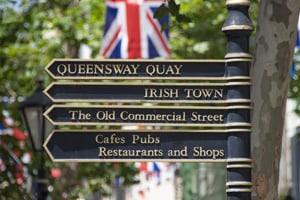
Here you’ll find a marina, with many people living aboard their boats, waterfront bars, and restaurants. There’s also a shopping mall and even a five-star floating yacht hotel, the size of a medium-size cruise ship, with a restaurant, a casino, etc. It’s here you’ll find most of Gibraltar’s nightlife.
If you’d rather delve into history, my guess is that you’ll enjoy the Gibraltar National Museum on Bomb House Lane. Here you’ll learn about the territory’s culture, history, and everything else Gibraltarian.
In the basement are the remains of what was once an Arabic bathhouse. They’re still one of the best-preserved Moorish baths in Europe, despite being used as a stable by the British military.
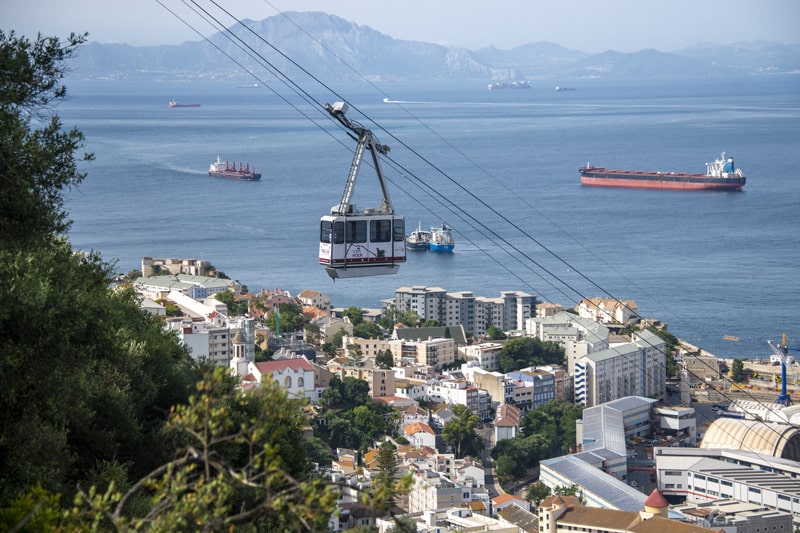
Scaling “The Rock”
Of course, most people who travel to Gibraltar come to see “the Rock.” It’s a vast monolithic limestone promontory on the Strait of Gibraltar, which connects the Mediterranean Sea with the Atlantic Ocean.
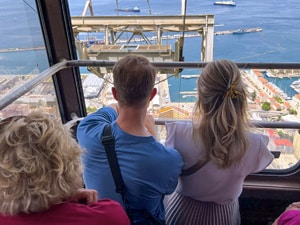
If you’ve traveled there to see it, you’ll most likely want to go to the top. Its highest point is 1,396 feet (426 meters), although you can only reach the second highest peak. Even so, its elevation isn’t that different at 1,352 ft (412 meters) above sea level. You can reach the top via cable car, minivan/taxi, or walking.
As one online writer rated the difficulty factor, the first two options – cable car, minivan/taxi – are comfortable. He considered the third, walking, as only tiring and sweaty, although I think he must have underestimated this ranking due to his youth and good physical condition.
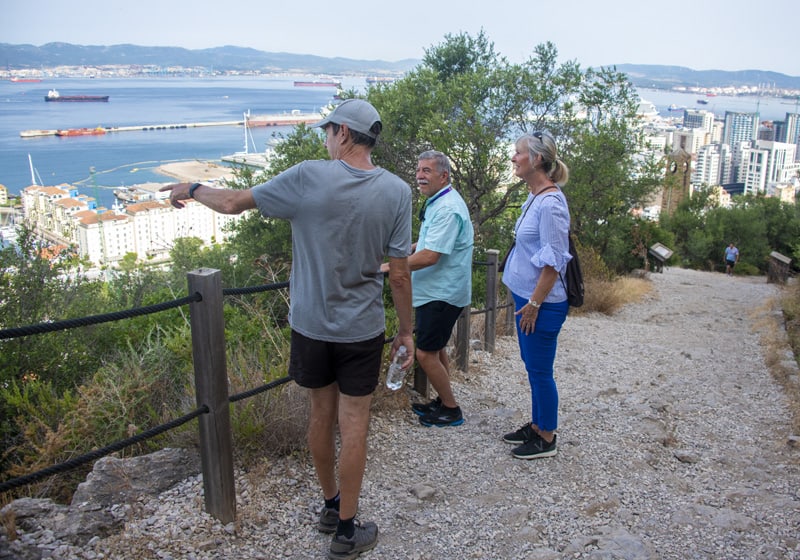
Our Walk Up the Rock of Gibraltar
I searched online for guides that would take visitors up the Rock of Gibraltar. To put it mildly, the rates that many guides were charging are shocking. I then discovered Stephen of Walking Gibraltar.
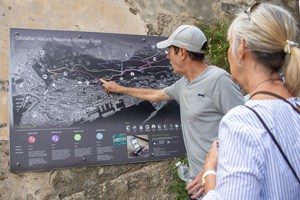
A guide licensed by the tourist office, his rate was £20 or €25 per person, much lower than other guides. So, we made the arrangements, and Stephen directed me to meet him and a couple from South Carolina at the appointed time and place.
We were all on time, and after a few minutes of Stephen explaining what we could expect to see, he told us we could start walking.
Walking? I looked at the other couple and said, “what?” They, in turn, looked at Stephen and asked, “we’re not going on the cable car?”
Stephen explained this is a walking tour up to the top, which is noted on the website. The three of us then realized none had read the entire description. We huddled for a minute and then decided to continue with Stephen. After all, we reasoned, we could always turn around and come back.
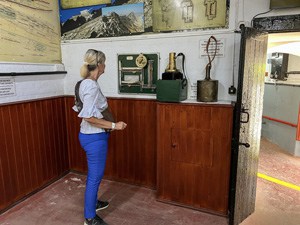
It took us a few hours of a continuous slog uphill. I’m sure I slowed our little group down by pausing every few hundred yards, but the tour was excellent.
Stephen is a wonderful guide with immense knowledge about everything Gibraltarian. On request, he will also do this tour in reverse, starting at the top and walking down.
You can also walk up Gibraltar via the “Mediterranean Steps.” It is a steep stairway built by the British Army in the 18th century to allow access to various bases. Note: only the fit should attempt it.
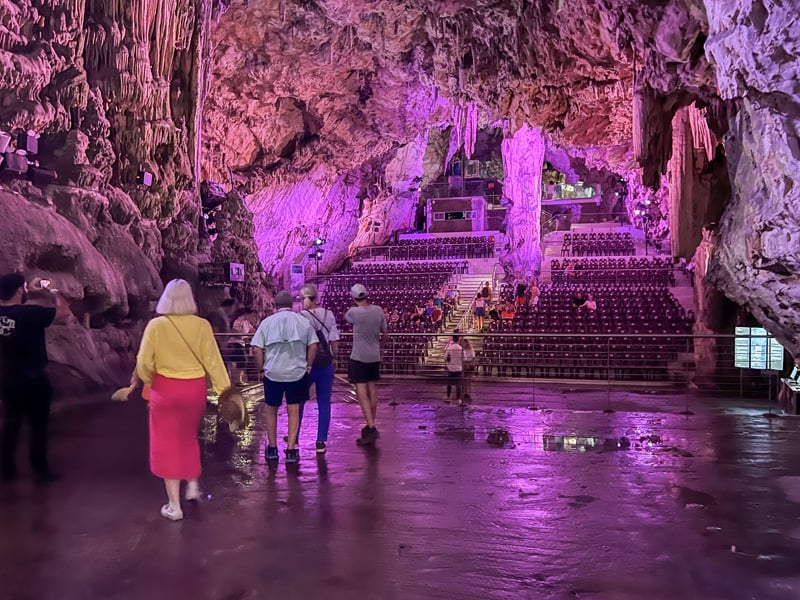
St Michael’s Cave
Almost 900 feet (274 meters) above sea level, St. Michael’s Cave is one of Gibraltar’s most incredible geological attractions.
It is a series of caverns and tunnels filled with stalactites and stalagmites, some so deep that they were once thought to go underground to Africa. The largest of Gibraltar’s 150+ caves, everyone knows about it when they go to the top of the Rock.
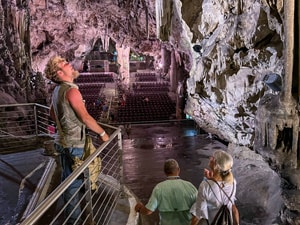
Neanderthals lived in them more than 40,000 years ago, and they were later used by both the Moors and Spaniards for defensive purposes. In World War II, the British had prepared the caverns for use as a hospital.
Today, the “Cathedral Cave” houses a natural underground 400-seat auditorium used for music, ballet, drama, and other performances. The cave also has a spectacular sound and light show, which is incredibly beautiful and mesmerizing.

Gibraltar’s Nature Reserve
Gibraltar’s Nature Reserve stretches the entire length of Gibraltar, covering almost 40% of the territory.
St. Michael’s Cave is in Gibraltar’s Nature Reserve atop Gibraltar. In nearby Forbes’ Quarry one of the world’s first female Neanderthal skulls was discovered in 1848.
However, the Reserve’s most famous residents are the 250 or so Barbary macaques, also known as Barbary apes. Usually referred to as “monkeys” here, they’re the only wild apes in Europe.
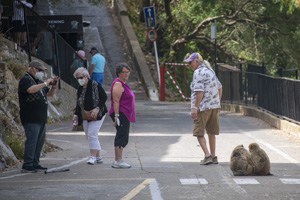
They are relatively docile, but will attack and bite if they feel threatened or cornered. However, unlike the apes in Morocco, feeding them is strictly forbidden.
These apes, however, are best known for being expert pickpockets and will swiftly grab anything from you that is edible.
I was in the souvenir and snack shop outside St. Michael’s Cave, waiting to pay for a bottle of water. The man in front of me had just purchased ice cream. As he walked toward the door, the cashier called to him, “be careful, there are monkeys by the door.”
A few minutes later, I was standing by the door when I heard a yell from another tourist after a monkey jumped up and stole the ice cream from his hand.
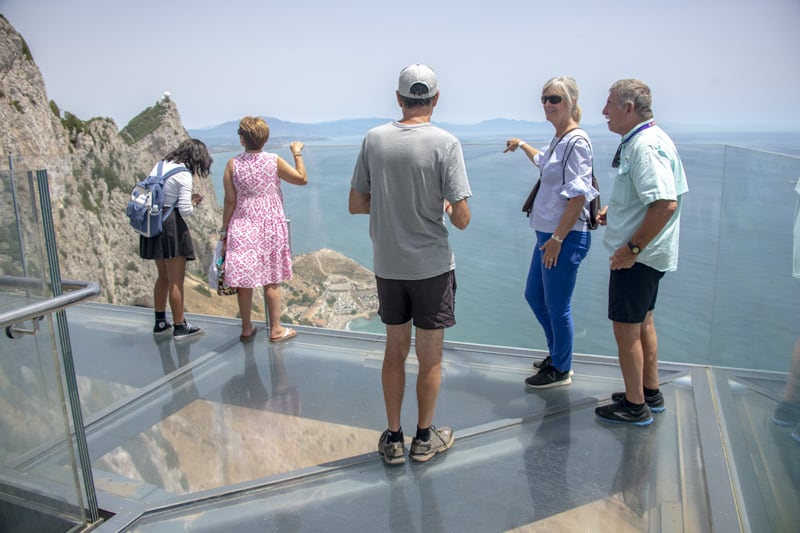
Soon, we left the monkeys and headed off to the famous Skywalk, built atop a former World War 2 lookout point.
A glass platform and walkway, it provides an unbelievable view of the entire area from more than 1,100 feet (340 meters) above the Mediterranean. In cities such as Chicago and Toronto, where walkways jut out from buildings, I never liked these platforms. But being out in the open in such a spectacular setting, this was much different. I loved it!
The Experience
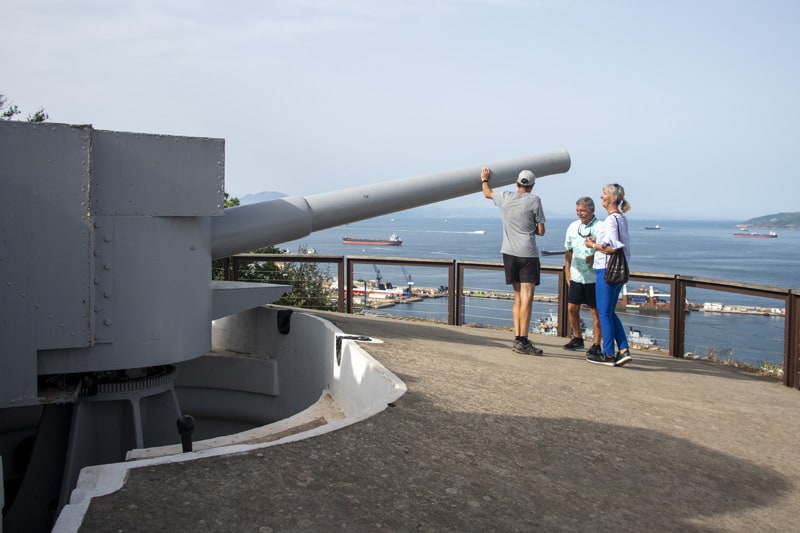
The tour was very enjoyable. At the top, we had incredible views of both Europe and Africa and three countries (Gibraltar, Spain, and Morocco). And despite the sweltering heat I experienced in Spain, Gibraltar was always cool thanks to the Mediterranean breeze.
I wish I had been able to view Gibraltar’s famous tunnels, but unfortunately, there just wasn’t time.
Today, 35 miles (56km) of tunnels weave through the Rock. Astoundingly, the earliest – then seven miles – were dug by hand during the Great Siege of Gibraltar (1779–83) when the British defeated the Spanish and French forces. Even more impressive, the tunnels were all dug in a few weeks.
The tunnels were expanded dramatically during World War II when they were grown from seven miles (11km) to 25 miles (40km).
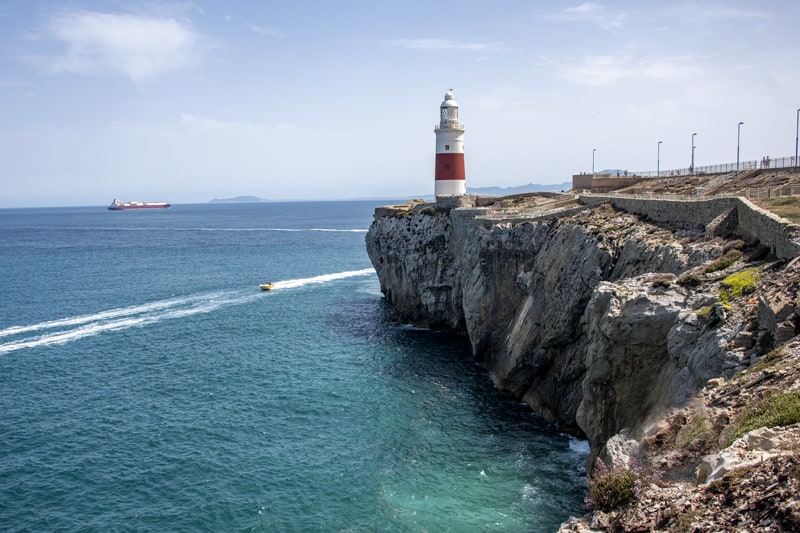
Europa Point and the Beaches of Gibraltar
One last recommendation, if you have a rental car.
Since I had a rental, I found a drive around the far side of Gibraltar enjoyable. Only one road goes around Gibraltar, so it’s hard to get lost, and you’ll see another side most travelers don’t.
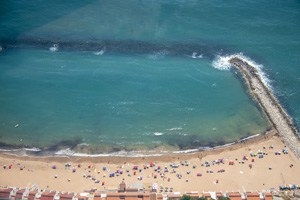
Take the road down to Europa Point, the most southerly tip of Gibraltar. You’ll find a famous lighthouse, a modern mosque, and a park with the Sikorski Memorial. The memorial is a small monument to one of Poland’s leading WWII generals who died there in a plane crash in 1943.
You’ll pass a handful of beaches at (going north to south) Catalan Bay, Playa de Los Catalanes, Black Strap Cove, and Sandy Bay. It’s about a 15-minute drive.
Alternatively, you can take the #2 Bus, which runs approximately every 10 minutes in both directions.
If You Go:
Gibraltar Tourist Board – General Public Information Office
The Gibraltar Heritage Trust
The Main Guard
13 John Mackintosh Square
Gibraltar
Tel: (+350) 20045000
Tel: (+350) 20074950
Email: [email protected]

Leave a Reply